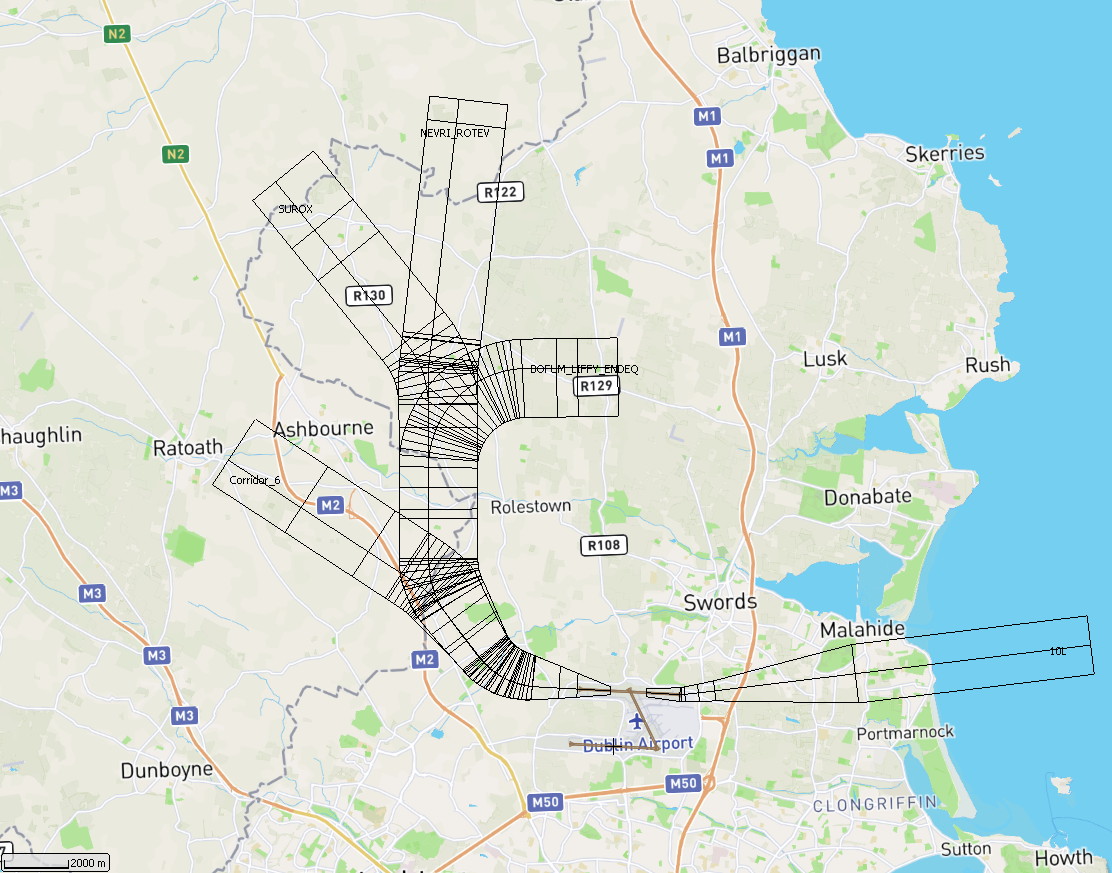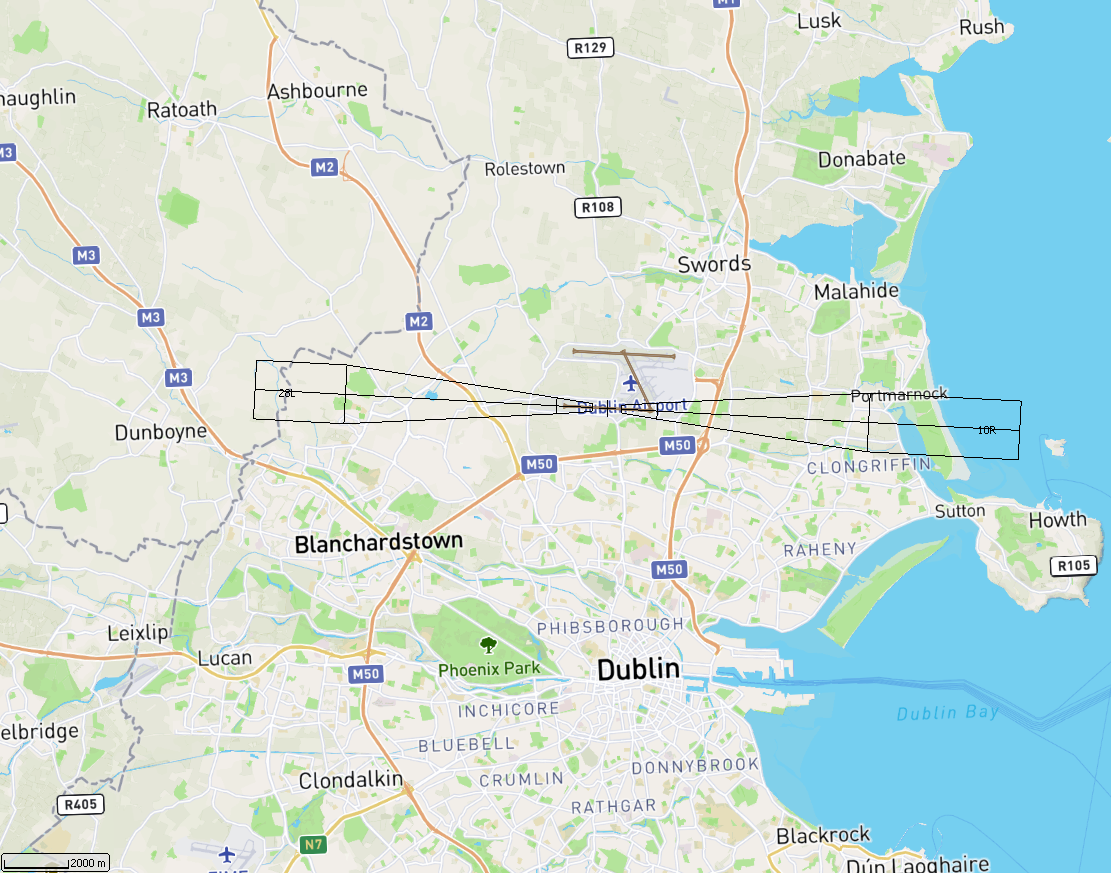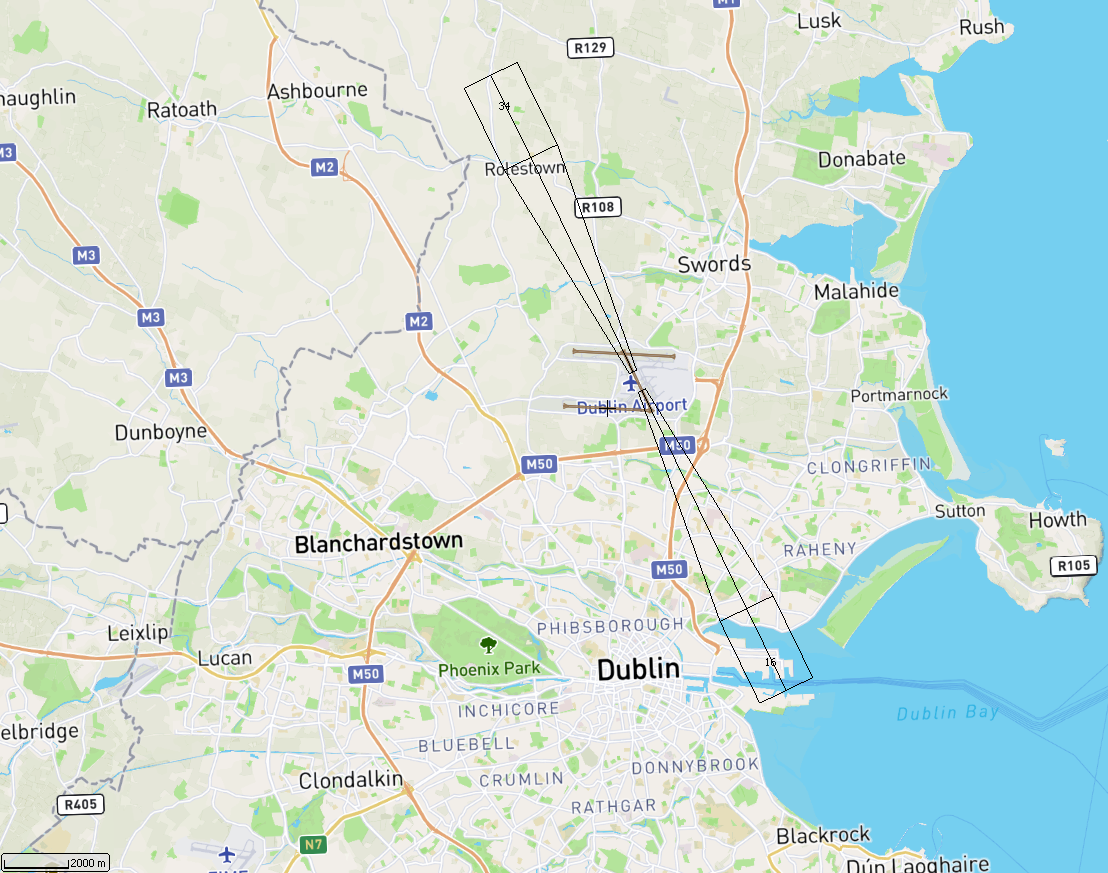A flight path is a designated air corridor that aircraft use to travel from one location to another, ensuring orderly and safe passage through controlled airspace.
In certain circumstances, such as adverse weather conditions or air traffic congestion, aircraft may deviate from their designated flight paths, typically under the instruction of Air Traffic Control.
Standard Terminal Arrival Routes (STARs) and Standard Instrument Departures (SIDs) are types of flight paths used at Dublin Airport.
What is a Standard Terminal Arrival Route (STAR)?
A Standard Terminal Arrival Route (STAR) is a flight path that aircraft follow when approaching and landing at an airport. These routes are designed to provide consistent, predictable paths for aircraft to follow on arrival.
What are Standard Instrument Departures (SID)?
Standard Instrument Departures (SID) are departure procedures established to ensure the safe and efficient departure of aircraft from an airport. They are designed to facilitate the transition from take-off to the en-route phase of flight, while maintaining separation from other departing and arriving aircraft.
Maps of SID’s for each runway at Dublin Airport and for large and small aircraft are published by AirNav Ireland in a document called the AIP (Aeronautical Information Package).
What is a Noise Preferential Route (NPR)?
An NPR (Noise Preferential Route), also known as an Environmental Noise Corridor, is a designated path that enables monitoring of an airlines' adherence to a Standard Instrument Departure (SID).
Typically, an aircraft follows an NPR from take-off until it reaches a specified altitude (3,000 feet for the South Runway/Cross Wind Runway and 4,000 feet for the North Runway), at which point Air Traffic Control (ATC) directs it onto a more direct heading to its destination.
Aircraft generally travel in the middle of this corridor, although the exact path within it may vary due to factors such as navigational equipment, aircraft type and weight, and weather conditions (particularly winds that can cause drifting). Aircraft flying within this corridor are considered to be track adherent. These corridors do not apply to Category A/B aircraft (light aircraft, turbo props).
North Runway Noise Preferential Route (NPR):

South Runway Noise Preferential Route (NPR):

Crosswind Runway Noise Preferential Route (NPR):

